
“We accepted 328 first-group students. At that time, each university had only theory-based principles. Despite a limited time of work, every institute could select students who met all the qualifications. That is when we started together. Today, the program is starting to search for the 4th group of students.”

“3 years ago, all of the first-group students were with us. There is only one year left for them to graduate and become full-time teachers in their hometown community area. This can be proved to some extent that all those accepted children by their institutions are the real products of the system selection process. They may not be suitable for important jobs at the destination. In this program, we would like to develop teachers who are really ready to go back to work in remote areas or areas with specific problems.”
Asst. Prof. Dr. Pissamai Rattanarojsakul, Project Manager of the Homegrown Teacher Scholarship Program, mentioned the mission of searching-screening-selecting of students in the program whom each institution jointly searched through suitable methods in accordance with space, context, and on-site situation of each case to help shape the searching process for students who are ‘real’ local teachers to get an opportunity for their studies at the higher education level. It is also a cultivation of ‘Community developing teachers’ who will pave the way to provide education for local children and youth towards the achievement of goals for the policy change on ‘teacher production’ of the country.
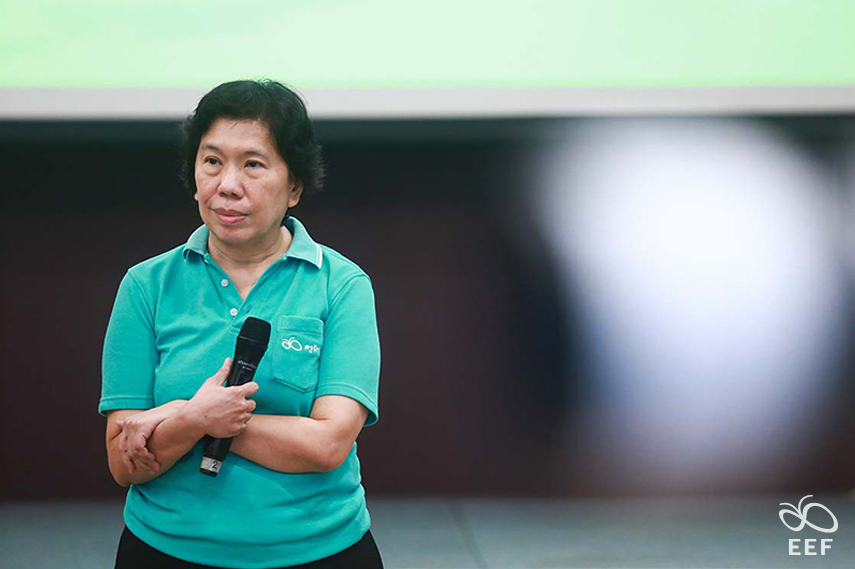
Asst. Prof. Dr. Pissamai Rattanarojsakul,
Project Manager of the Homegrown Teacher Scholarship Program
This article shares part of the experience of a model institute to get students in each group or each area. The working group needs to travel to different areas while facing many difficulties of geographic, and cultural differences, beliefs, attitudes, and various limitations. However, obstacles never stop the working group’s determination. All institutions confirm that they won’t stop searching and refuse to leave each area until they have ensured that no one is slipped away ‘because one person who misses the opportunity may be the one we are looking for.’
Let’s look at what are the problems that each institute has encountered or what tools they have used during their search mission or how are the possibilities. These moments of experience will be an important mechanism for creating future changes.
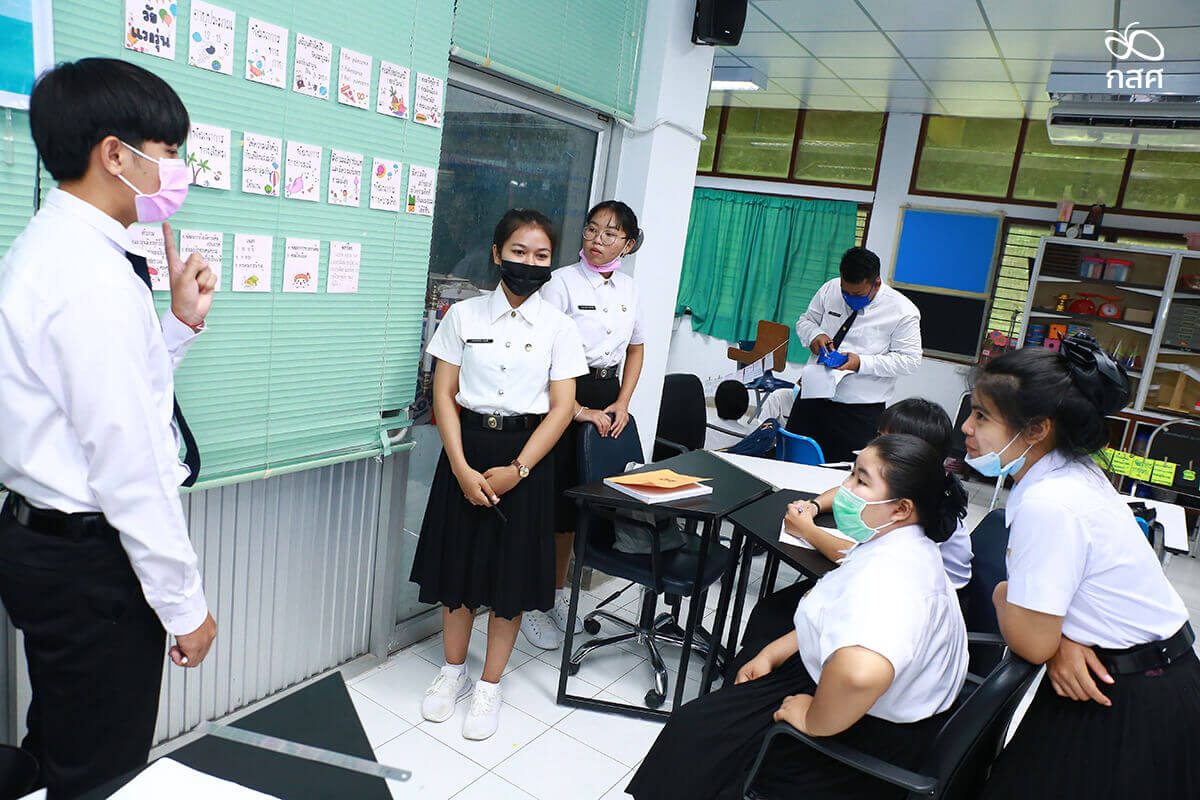
‘Cooperation as a guiding compass’
Chiang Mai University (CMU) stands out with equipment and tools in the areas, in line with details of data records for improvement and resolutions every year, as well as the working group which combines different expertise into one team.

A representative of the working group of the Homegrown Teacher Scholarship Program, CMU said that the biggest problem is related to actual conditions on-site. During the first year of encountering obstacles in traveling to each area, the problems were resolved by using insiders for fulfillment through communication with the Sub-district Administrative Organization, educational service areas, director of the destination schools, and community volunteers to help lay the path and work together onsite. This can shorten the traveling time in the following years for searching for more children in more areas while taking time to screen each target in depth.
In addition, CMU also gets cooperation from faculty members, including the Faculty of Education, with a large team of more than 30 people from 13 disciplines with equipment and tools, research, and assessment teams to bring the expertise of various disciplines to its full advantage.
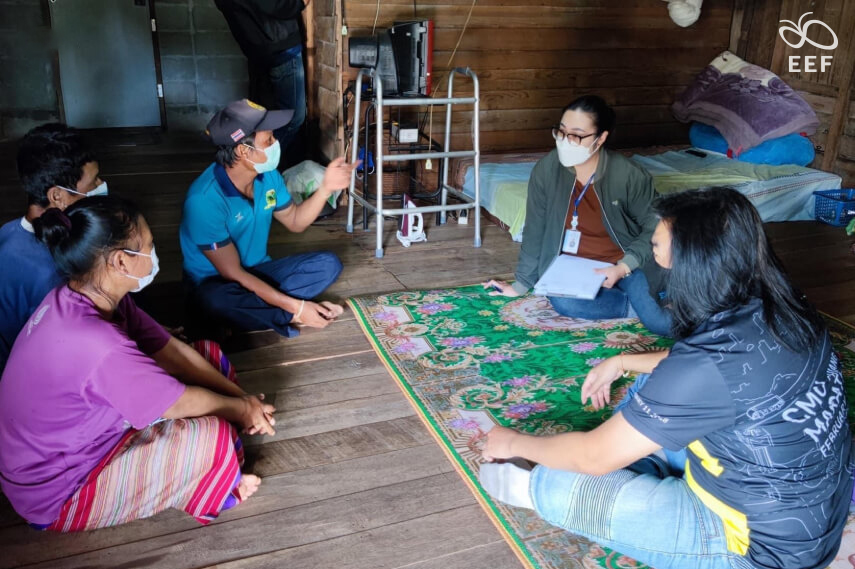
“One question we always hear is ‘Why do we have to go all the way to the borders of our country or into difficult areas to search for a student?’ The answer to this question is that we think that such a student will be the right person who deserves an opportunity. Three years ago, this student confirmed to us that we did not lose the opportunity to build one person who would go back and improve that certain remote area.”
One position for one student
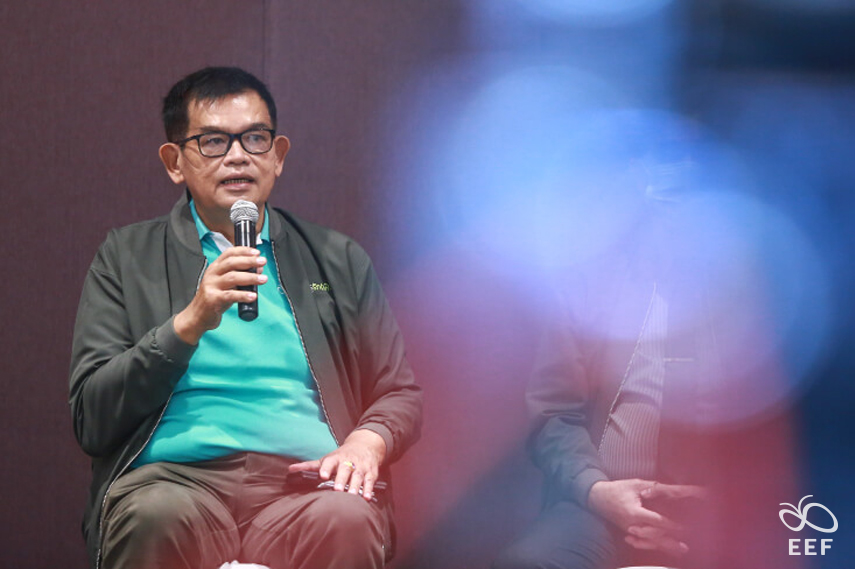
Kalasin University, the representative working in the northeastern area, said that public relations to inform information in breadth and depth dimensions can be a tool for a more thorough search. Every time of going to each area, the working team will have access to every home of the listed children to talk to those children and their parents. Then, the team will move forward to all secondary schools and technical colleges, including the hospices in every community for notification of news or in search of children who are qualified outside the proposed list. In case of doubts, the working team will go back to the areas and won’t move out until finding the ones worthy of the scholarship.

A representative of the working group revealed that in order to get 1 scholarship student, we have to divide people into two teams. One team would go to the pilot areas to explore the children’s homes and ask for information from neighbors and other people in the community before another big team enters again for a formal interview of children and families. This would be an in-depth interview with target groups who have passed the initial qualification screening. In this way, the university greatly reduces the risk of searching, while filtering again on-site before submitting the potential scholarship students to the selection process by the central committee.
Expanding the search until finding the right person
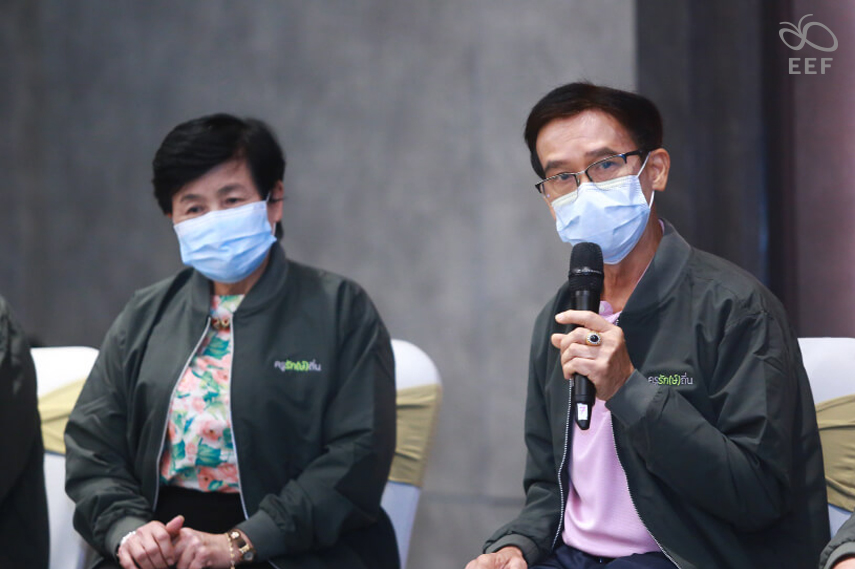
Even though Chom Bueng Village, Rajabhat University, is in the central region of Ratchaburi Province, the area is responsible for finding scholarship students while extending to the eastern region. With a wide territory covering the economic areas, it is sometimes not easy to find qualified students. The university, therefore, solves the problem by mapping around the destination schools to expand the search areas to other surrounding villages or sub-districts.
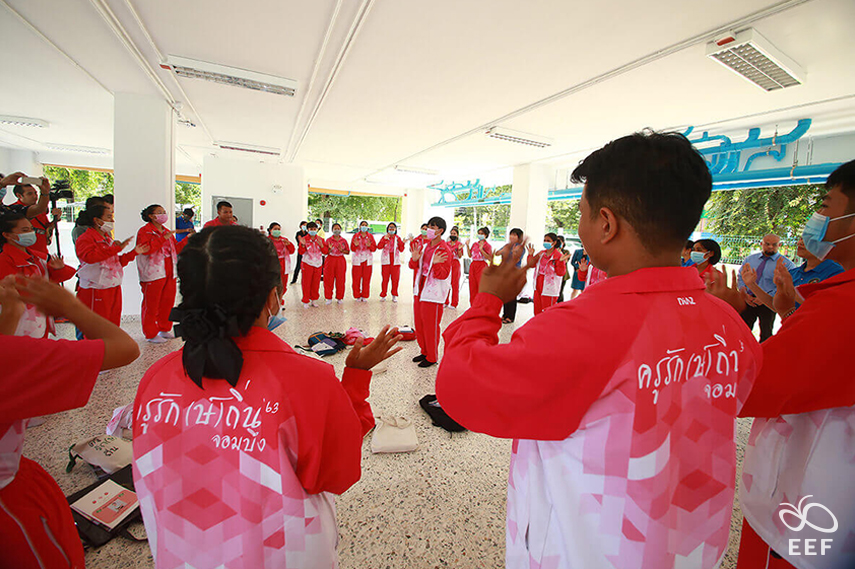
The working team of Chom Bueng Village, Rajabhat University, said that the destination schools are considered as the center of the search in coordinating with community leaders, on-site preparation, and navigation to children. The key is to prevent locking the funds for any specific students. The team has to clarify the in-depth information that “If a child receives a scholarship and does not really have the intention to become a teacher, there is a higher chance that such child will not pass the test during the cultivation process. Finally, the child will be missed in the middle. This means that the child’s guarantor must be responsible for the mistake.” Thus, each school in each community can envision that we need someone with a spiritual teacher who is ready to take on the hard work. This is the start of a very rigorous and important screening.
Let the ‘camera’ search instead of the eyes
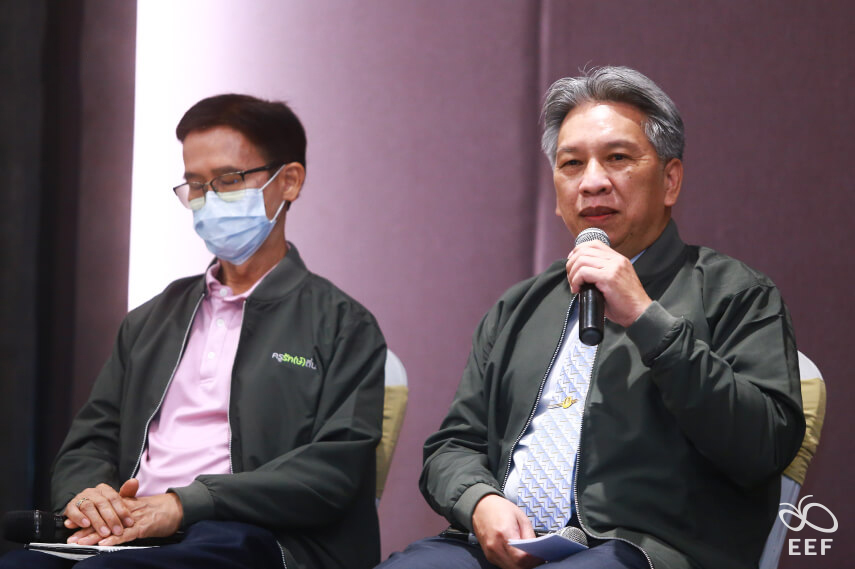
Chiang Mai Rajabhat University revealed another corner of the search. Many times, if not ensuring that students in the consideration process really ‘lack the opportunity’, there should be some truths from technology that lead to more precise decisions.
A faculty representative of Chiang Mai Rajabhat University said that the institute uses a large search team because the areas of responsibility are scattered in the upper and lower northern regions. The most problem found is that some areas are high mountains that cannot be reached, so they must use four-wheel drive vehicles from the municipality. During the COVID-19 crisis, some areas could not be entered and we have to move back and reorganize the process by bringing the technology for children to make clips of their homes and send those clips or online interviews. However, before the final step, the team will visit all the children’s homes.
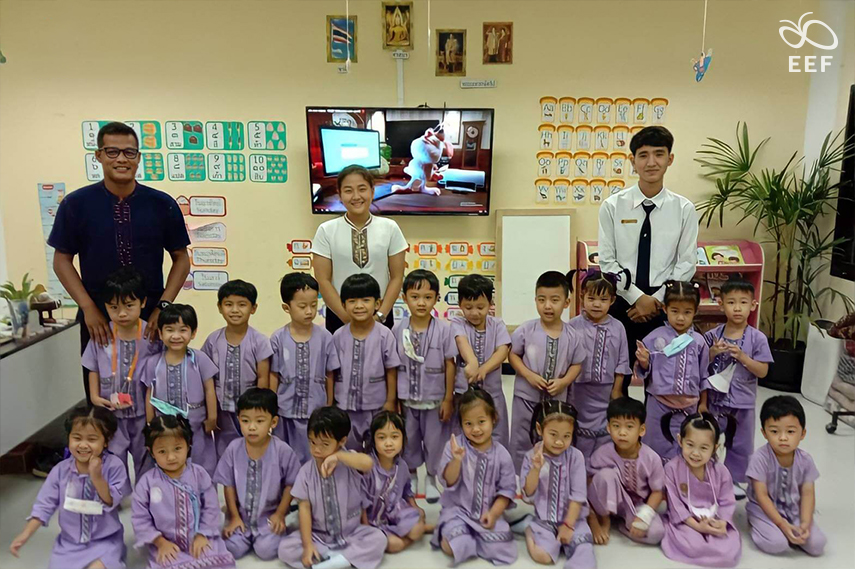
“We have an IT team carrying a camera to take pictures inside and outside children’s homes. The advantage is that using technology will help keep records of information that can be used as evidence for retrospective considerations. The camera can keep records beyond the human’s eyes to view everything inside the homes. When going to a home, we can ask children to open the locked rooms and see everything fully with an understanding of their real status. So, the camera helps quite a lot in filtering unqualified children out.”
These stories are a few tips of experience from the mission of the Homegrown Teacher Scholarship Program. Asst. Prof. Dr. Phisamai, Project Manager, concluded that “Today, the first group of students is preparing to enter their 4th year in the program. They have passed the Enrichment Program or specific courses of the Institute for Model Teachers. In the meantime, they have also learned to communicate with the destination schools which are the real areas where they will go back to work after graduation.”
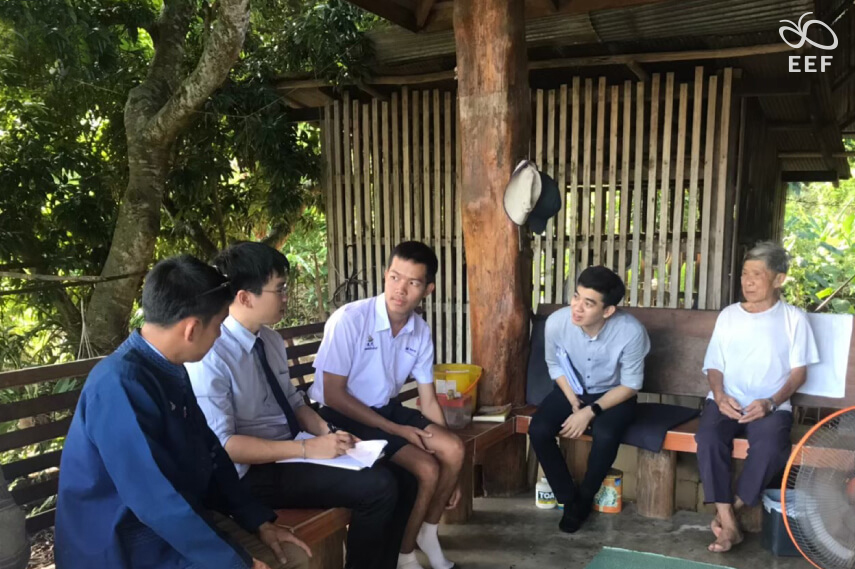
“This is a living research with real problems and real practice. Therefore, when students pass the tests, we can believe that these spiritual teachers will be the first group of teachers who create certain changes which we can witness the outcomes within the next 5-10 years.”

